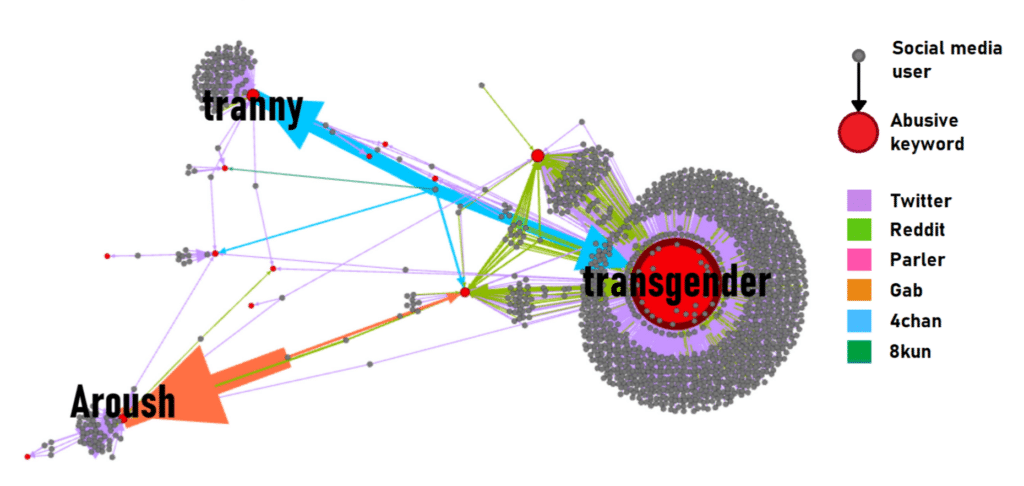29 May, 11:10
Notice: Undefined index: tg1tga_access in /home/admin/www/anonup.com/themes/default/apps/timeline/post.phtml on line 396
Dano Q Public
@DanoQPublic
30 May, 07:15
In response Dovetail 1221 to her Publication
Notice: Undefined index: tg1tga_access in /home/admin/www/anonup.com/themes/default/apps/timeline/post.phtml on line 396
The Mac
@TheMac
30 May, 07:22
In response Dano Q Public to his Publication
Notice: Undefined index: tg1tga_access in /home/admin/www/anonup.com/themes/default/apps/timeline/post.phtml on line 396
The Mac
@TheMac
30 May, 07:22
In response The Mac to his Publication
Notice: Undefined index: tg1tga_access in /home/admin/www/anonup.com/themes/default/apps/timeline/post.phtml on line 396
The Mac
@TheMac
30 May, 07:23
In response The Mac to his Publication
Notice: Undefined index: tg1tga_access in /home/admin/www/anonup.com/themes/default/apps/timeline/post.phtml on line 396
The Mac
@TheMac
30 May, 07:36
In response The Mac to his Publication
Metal nanoparticles show a particularly strong interaction with light, which is the basis for nanoparticle plasmonics. One of the main goals of this emerging research field is the alignment of nanoparticles and their integration into sophisticated nanostructures providing a tailored interaction with light. This assembly of nanoparticles at well-controlled substrate sites often involves expensive technological approaches, such as electron beam lithography in order to fabricate the nanoparticle structures.
Notice: Undefined index: tg1tga_access in /home/admin/www/anonup.com/themes/default/apps/timeline/post.phtml on line 396
The Mac
@TheMac
30 May, 07:37
In response The Mac to his Publication
Furthermore difficult numerical simulations are needed to predict their optical properties. Both requirements, fabrication and prediction, complicate a cost-efficient exploitation of nanoparticle plasmonics in optoelectronic devices. Here we show that silver nanoparticles deposited under exposure to visible light arrange in a way that the resulting structure shows an optimized interaction with that light. This way, the light not only controls the nanoparticle alignment with an estimated accuracy of well below 20 nm during deposition from the liquid phase, but also defines the optical properties of the growing structure, and therefore complicated prediction is not needed.
Notice: Undefined index: tg1tga_access in /home/admin/www/anonup.com/themes/default/apps/timeline/post.phtml on line 396
The Mac
@TheMac
30 May, 07:42
In response The Mac to his Publication
Kevin McHugh, now an assistant professor of bioengineering at Rice University and the lead researcher on the project, said he's baffled by the idea that his project involves tracking chips. "There's no microchips at all," he said. "I don't even know where that comes from. All the quantum dots [do is] produce light."
Notice: Undefined index: tg1tga_access in /home/admin/www/anonup.com/themes/default/apps/timeline/post.phtml on line 396
The Mac
@TheMac
30 May, 07:49
In response The Mac to his Publication
We report a novel approach employing hybrid upconversion nanomaterials, combined with the photoresponsive ion channel channelrhodopsin-2 (ChR2), to achieve near infrared light (NIR)-mediated optogenetic control of neuronal activity. Current optogenetic methodologies rely on using visible light (e.g. 470-nm blue light), which tends to exhibit high scattering and low tissue penetration, to activate ChR2. In contrast, our approach enables the use of 980-nm NIR light, which addresses the short-comings of visible light as an excitation source.
Notice: Undefined index: tg1tga_access in /home/admin/www/anonup.com/themes/default/apps/timeline/post.phtml on line 396
The Mac
@TheMac
30 May, 07:50
In response The Mac to his Publication
This was facilitated by embedding upconversion nanomaterials, which can convert NIR light to blue luminescence, into polymeric scaffolds. These hybrid nanomaterial scaffolds allowed for NIR-mediated neuronal stimulation, with comparable efficiency as that of 470-nm blue light. Our platform was optimized for NIR-mediated optogenetic control by balancing multiple physicochemical properties of the nanomaterial (e.g. size, morphology, structure, emission spectra, concentration), thus providing an early demonstration of rationally-designing nanomaterial-based strategies for advanced neural applications.
Notice: Undefined index: tg1tga_access in /home/admin/www/anonup.com/themes/default/apps/timeline/post.phtml on line 396
The Mac
@TheMac
30 May, 07:52
In response The Mac to his Publication
Colloidal quantum dots (QDs) are nanoscale semiconductor crystals with surface ligands that enable their dispersion in solvents. ... Colloidal QDs can be integrated in devices using solution-based assembly methods to position single QDs and to create ordered QD arrays.
Notice: Undefined index: tg1tga_access in /home/admin/www/anonup.com/themes/default/apps/timeline/post.phtml on line 396
The Mac
@TheMac
30 May, 07:53
In response The Mac to his Publication
Colloid Cysts are benign cystic fluid collections that occur within the fluid-filled ventricles of the brain. Colloid cysts develop in the brain at the junction of the paired lateral ventricles and can cause blockage of cerebrospinal fluid (CSF) flow leading to hydrocephalus (excess brain CSF).
Notice: Undefined index: tg1tga_access in /home/admin/www/anonup.com/themes/default/apps/timeline/post.phtml on line 396
The Mac
@TheMac
30 May, 07:57
In response The Mac to his Publication
A colloid is a mixture in which one substance of microscopically dispersed insoluble particles are suspended throughout another substance. However, some definitions specify that the particles must be dispersed in a liquid,[1] and others extend the definition to include substances like aerosols and gels. The term colloidal suspension refers unambiguously to the overall mixture (although a narrower sense of the word suspension is distinguished from colloids by larger particle size). A colloid has a dispersed phase (the suspended particles) and a continuous phase (the medium of suspension). The dispersed phase particles have a diameter of approximately 1 nanometre to 1 micrometre.
Notice: Undefined index: tg1tga_access in /home/admin/www/anonup.com/themes/default/apps/timeline/post.phtml on line 396
The Mac
@TheMac
30 May, 08:00
In response The Mac to his Publication
Some colloids are translucent because of the Tyndall effect, which is the scattering of light by particles in the colloid. Other colloids may be opaque or have a slight color.
Notice: Undefined index: tg1tga_access in /home/admin/www/anonup.com/themes/default/apps/timeline/post.phtml on line 396
The Mac
@TheMac
30 May, 08:01
In response The Mac to his Publication
A colloidal crystal is a highly ordered array of particles that can be formed over a very long range (typically on the order of a few millimeters to one centimeter) and that appear analogous to their atomic or molecular counterparts. One of the finest natural examples of this ordering phenomenon can be found in precious opal, in which brilliant regions of pure spectral color result from close-packed domains of amorphous colloidal spheres of silicon dioxide (or silica, SiO2).
Notice: Undefined index: tg1tga_access in /home/admin/www/anonup.com/themes/default/apps/timeline/post.phtml on line 396
The Mac
@TheMac
30 May, 08:02
In response The Mac to his Publication
These spherical particles precipitate in highly siliceous pools in Australia and elsewhere, and form these highly ordered arrays after years of sedimentation and compression under hydrostatic and gravitational forces. The periodic arrays of submicrometre spherical particles provide similar arrays of interstitial voids, which act as a natural diffraction grating for visible light waves, particularly when the interstitial spacing is of the same order of magnitude as the incident lightwave.
Notice: Undefined index: tg1tga_access in /home/admin/www/anonup.com/themes/default/apps/timeline/post.phtml on line 396
Thus, it has been known for many years that, due to repulsive Coulombic interactions, electrically charged macromolecules in an aqueous environment can exhibit long-range crystal-like correlations with interparticle separation distances, often being considerably greater than the individual particle diameter. In all of these cases in nature, the same brilliant iridescence (or play of colors) can be attributed to the diffraction and constructive interference of visible lightwaves that satisfy Bragg’s law, in a matter analogous to the scattering of X-rays in crystalline solids.
08:03 PM - May 30, 2021
In response The Mac to his Publication
Only people mentioned by TheMac in this post can reply
The Mac
@TheMac
30 May, 08:05
In response The Mac to his Publication
The natural ability of certain types of virus to form crystals or paracrystalline arrays, within infected cells or from liquid suspensions, is recognized by the workers concerned with the early applications of X-ray diffraction methods.
Notice: Undefined index: tg1tga_access in /home/admin/www/anonup.com/themes/default/apps/timeline/post.phtml on line 396
The Mac
@TheMac
30 May, 08:09
In response The Mac to his Publication
Colloidal crystalline nanoparticle viruses... activated by light and ultrasound.
Notice: Undefined index: tg1tga_access in /home/admin/www/anonup.com/themes/default/apps/timeline/post.phtml on line 396






